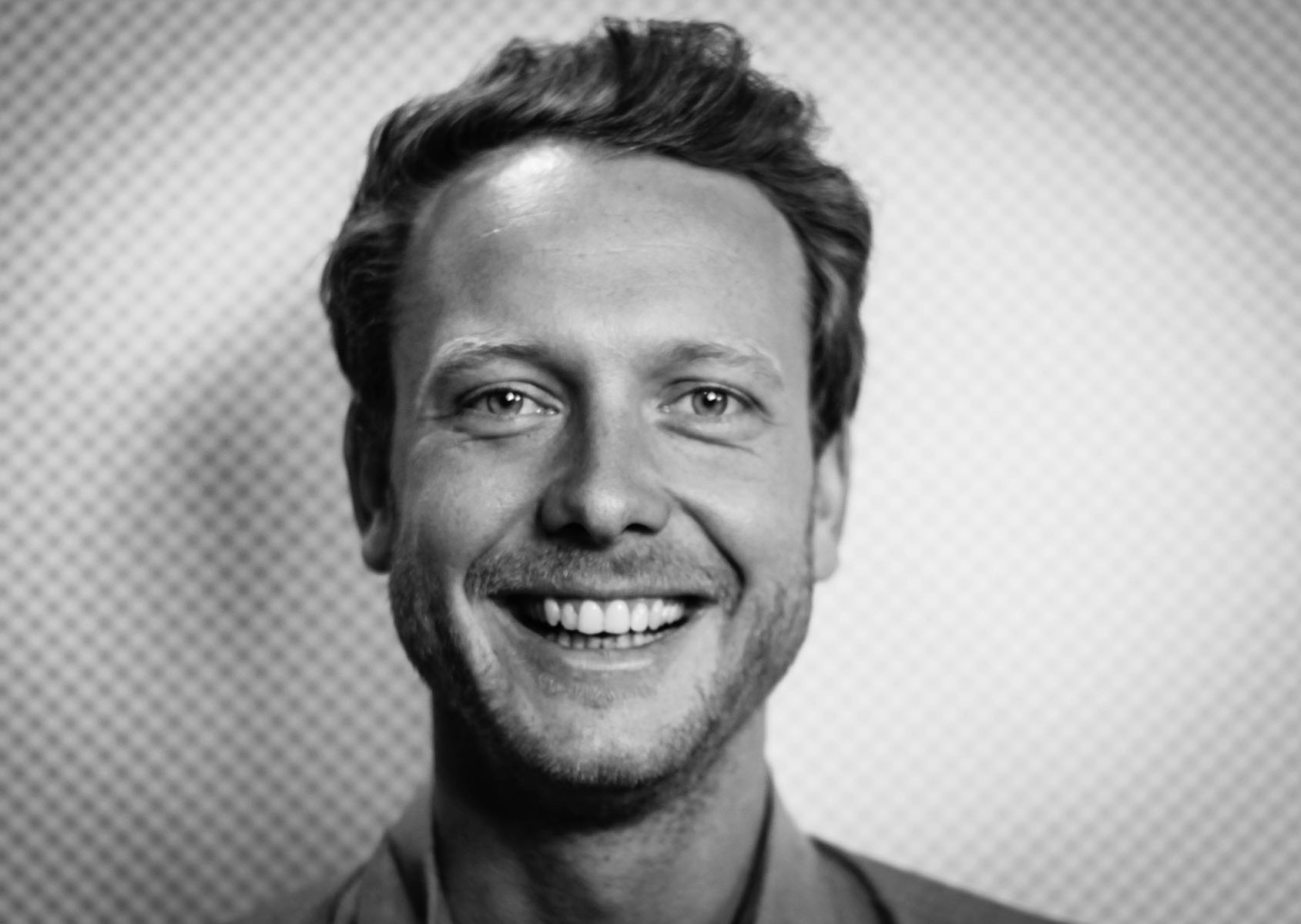
Standing in the barrel-filled cellars of Alois Lageder winery on a hot summer day, high up in the Northern Italian mountains of Alto Adige, close to the Austrian border, you're likely to hear the sound of classical music wafting slowly and softly through the air, along with a cool afternoon breeze. There's a windmill on the rooftop of the cellar and when the wind blows, it switches on the music which can then be heard playing throughout the cellar. The music is an hour-long piece from just one minute of work by Johann Sebastian Bach and was created by Italian artist Mario Airo. Connected to nature, the music plays slowly and speaks to the wine and to the people tending it saying, "Just take it easy, go slowly and develop your full potential."
This quest to stay connected to nature led the almost 200-year-old winery to begin farming biodynamically in 2004. Biodynamic farming is based on the teachings of Rudolf Steiner, a proponent of treating the vineyard as an organic whole through holistic, ecological and ethical approaches to farming. In what are known as "closed organisms," every component—animals, soils, crops, trees, weeds, pests, people, the music, and even the buildings and equipment work together as a single system. The Alois Lageder winery follows this closed-loop, self-sustaining system to grow healthier vines and make wines that are more expressive of the place they come from, their terroir.
Grape Collective caught up with Alois Clemens Lageder, sixth generation of this family-owned winery to talk about the Alto Adige winegrowing area and his family's winery.
 Lisa Denning: You are the sixth generation. Did you always think growing up that you would be part of the family business?
Lisa Denning: You are the sixth generation. Did you always think growing up that you would be part of the family business?
Alois Clemens Lageder: Actually, not really. There was a time as well where I studied sociology. And I did my own way. The beautiful thing about my childhood was that my father never gave me pressure to take over the winery. He wanted to give us free choice. So at the beginning I was studying economics for two weeks in Zurich, and after two weeks I called him and said, "Look. I'm not going to do this. I'm not interested in economics at all. I want to do something else." And so I went this other path and studied sociology. And only in the third year, I got in touch again. I started to work for our importer in Zurich, and back to the winery.
I got in touch with Rudolf Steiner, who was the founder of biodynamics. I started to read certain books about biodynamics, and so I got really interested again in wine and agriculture. And this was the moment in my third year of college when I decided to take over the winery, because it was fascinating that in a family winery you can put so much into it from your own personality and your own visions, actually. So, it wasn't always clear, but I had a free choice, and that's the beautiful thing about it.
Can you tell us a little bit about the Alto Adige wine area, and what makes it unique for growing grapes and producing wine?
I think the most important thing is to say that Alto Adige is the most northern region of Italy. And it's a beautiful mixture of huge diversity. It's a mixture of two cultures. A hundred years ago it was a part of Austria. So, only since 1919 has it been part of Italy actually. We are still very influenced by the Austrian culture, but we also get a lot of the influence by the Italian culture of course. And so it's these two cultures merging with each other and getting together. Everyone speaks two languages. Always when you go out to eat, you have two different styles of food: you have these Italian things, but you also have the knödel or the things from the old Austrian Empire. So you have both.
And then another beautiful thing about Alto Adige, and I think what's unique about the region, is that we are in the middle of the Alps, in the middle of the Dolomites, and we can play with a beautiful diversity. We can play with different soil types we have. On a very, very small scale, we can play with limestone, dolomitic limestone, but we can find vineyards on volcanic periphery on much more clay soils. We can play with the diversity. We have vineyards on 500 feet, but we can go high up until 3,000 feet. And so it's about this playground with this huge diversity, with different soil types, with different microclimates, with different elevation. And this makes it possible to have so many different grape varieties. So, we are not talking in Alto Adige about two or three grape varieties; we are talking about 25 because for each one we can find the right vineyard, the right spot to plant the certain grape varieties, where they find their perfect conditions. So I would say our identity, and that's something special about Alto Adige, our identity is the diversity.
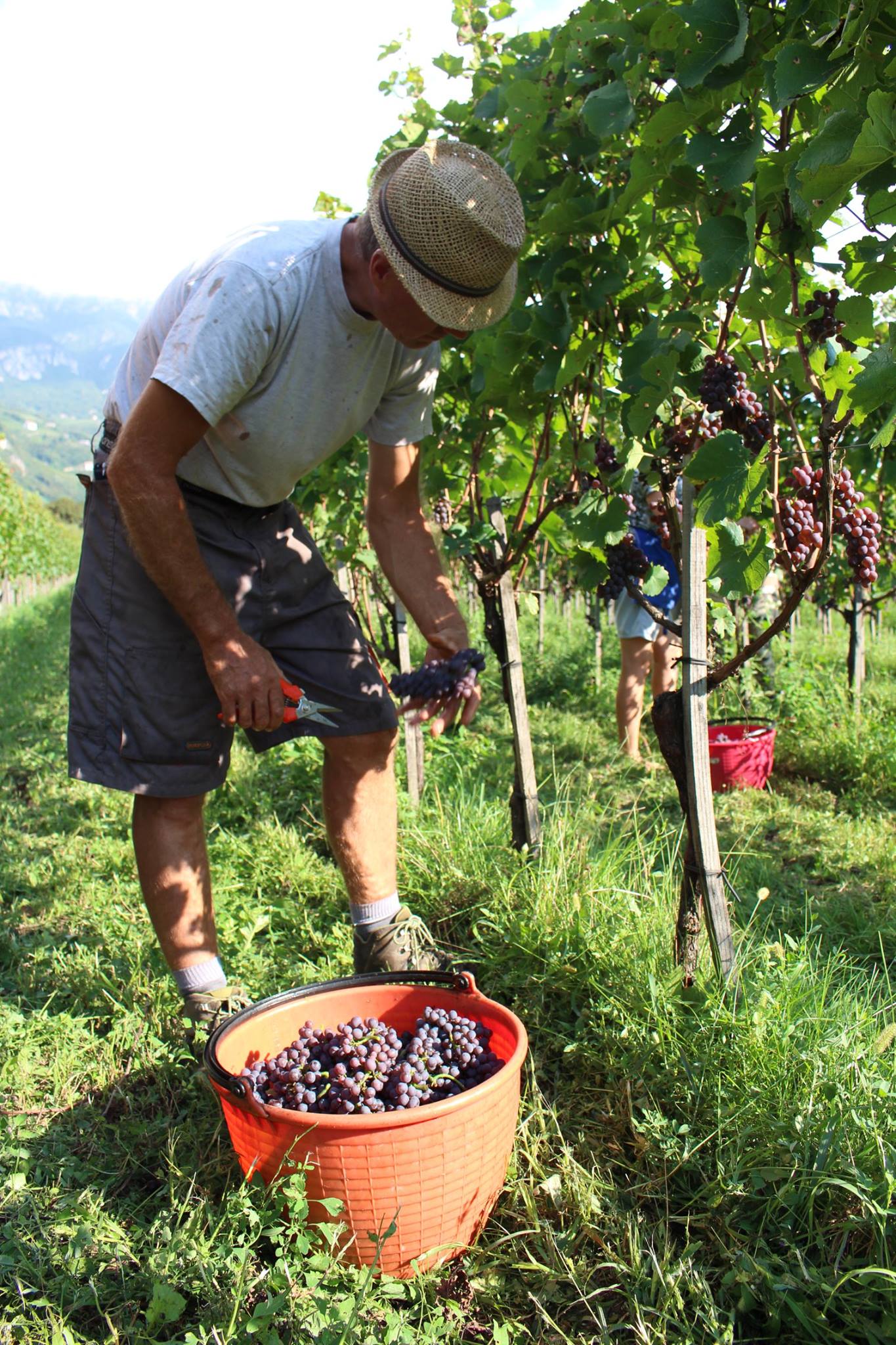 And what is your philosophy of winemaking?
And what is your philosophy of winemaking?
I would say we strive for the highest quality. And we do it in a certain natural way. We converted all our family-owned vineyards to biodynamics in 2004. That's the beautiful thing about being a family winery; we have 125 acres of family-owned vineyards that were converted to biodynamics, but we also work with small farmers from all over the region. And through this collaboration with these small farmers, and totalling approximately 90 different farmers, we can make use of this huge diversity. So we can go to northern valleys, to southern valleys, to the east, to the west, to find the right spot for each grape variety. And it's a very beautiful collaboration with those farms, based on trust. There is no written contract. And so we go out with them. We talk with them about biodynamics or organic farming.
They didn't all yet convert their farms or their vineyards to biodynamics or organics, but again here, our vision is in maybe five or 10 years, to have motivated them all to farm organically, or biodynamically. I think this is something important. We are a winery that, of course we have an important past; my father maybe was a pioneer for the last 30 years in Alto Adige. But I think we shouldn't just be proud of us and how you say in English, I don't know ...
Pat yourself on the back?
Pat yourself on the back. It's about looking in the future, and it's about finding ways to be pioneers maybe for the next 30 years. And this is something we can only do with respect for nature, trying at least to motivate our farmers to do the best in our vineyards and farming organically, and trying to change at least the whole agricultural area in Alto Aldige.
Because we have a huge problem, I think, in viticulture. We are talking about monocultures. And our goal, for example, needs to be to break up these monocultures. It's not only in Alto Adige where we talk about these kinds of things. If you go to Napa, if you go to Willamette, if you go to France, everywhere vineyards are always monocultures. And I think our goal nowadays is to try to break up those monocultures, trying to make a big step towards a closed organism where we try to reintegrate cows, sheep, other cultures, other plants, in those vineyards and to create a certain diversity. To create a certain fertility of the soil through this diversity.
And I would say that this is something that pushes us very hard, and I think this is a little bit of the foundation of our philosophy, trying to create a closed organism even though we are working with vines, and trying to motivate our farmers to do a similar step towards organic or biodynamic farming.
 And, I also understand you use a process called "transhumance." Can you tell us what that is?
And, I also understand you use a process called "transhumance." Can you tell us what that is?
Yeah, transhumance is a very old tradition actually that was used in Alto Adige since forever, but it disappeared in the last 40, 50 years. You need to think that we have vineyards in the valleys, and we have a beautiful landscape, mountains, on high elevations. And many many years ago, the mountain farmers, they brought their cattle, they brought their cows, in the wintertime, down in the valley. Because of the milder climate, they found even in wintertime, they could find food or at least grass in the valleys.
And so what is transhumance? It's this movement of sheep, or movement of cows where you bring the cows and the cattle from the mountains to the valleys, and in springtime from the valleys to the mountains again. And so what we did, we started a collaboration with a mountain farm, a cheese dairy. He is called Alexander and he brings approximately 10 cows after the harvest. So in October, he brings them down from the mountains where they have time to graze during the winter, where they find grass. And then in spring, when we don't need them anymore, because the plants start to shoot again, so we need to get them out again, we have the possibility to bring those cows back to his place. And so, that's also unique, to find cattle, to find cows in an alpine area which are 365 days outside. And that is something very unique as well.
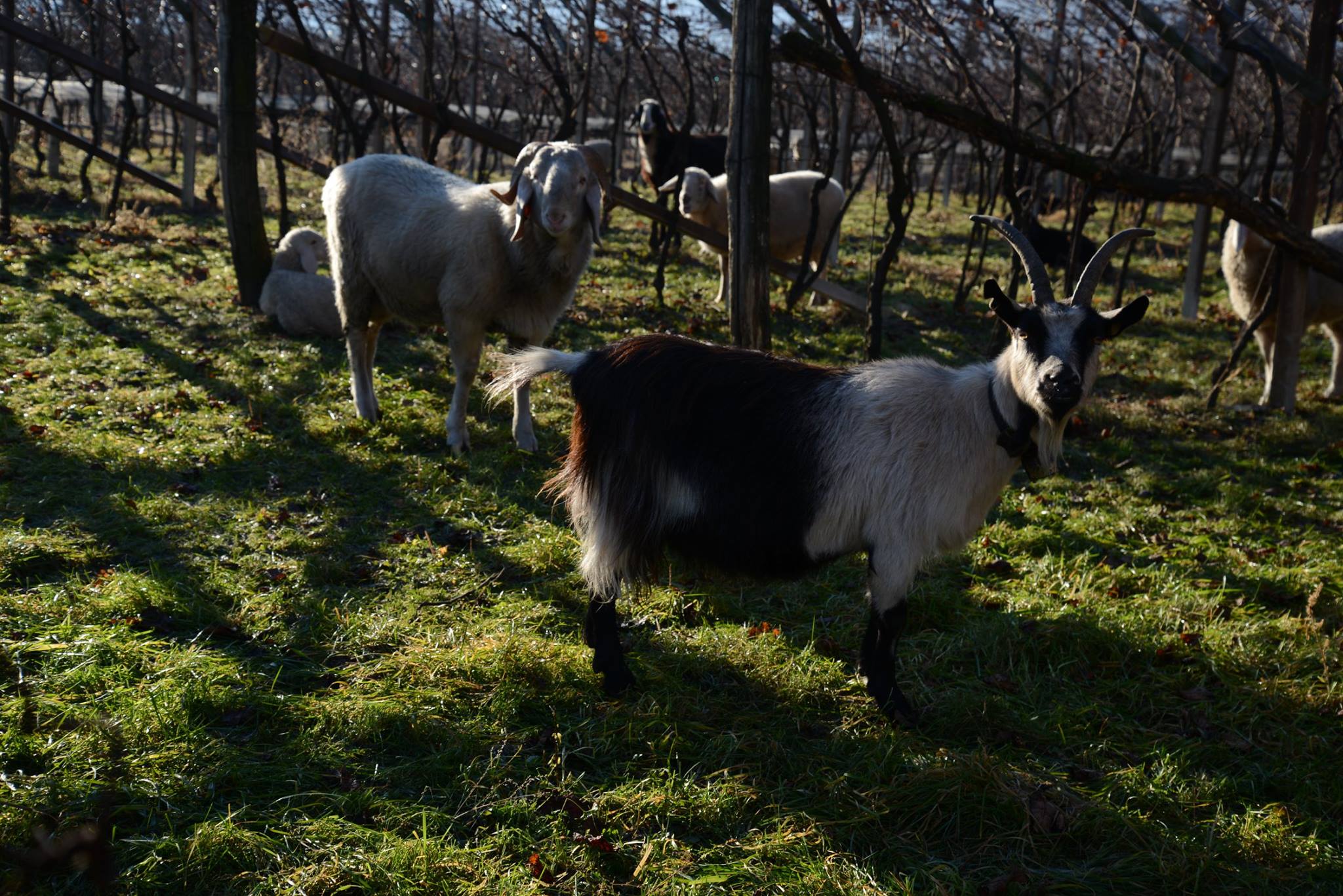 And the beautiful thing about it, it's not only that we have our advantage through this collaboration. Of course we have a certain manure, a natural manure in the vineyards, we have the animals back in the vineyard. So we are creating this closed organism again. But also the farmer has a beautiful situation because he can bring us the cows, the younger cows, which he doesn't need for making cheese. He can bring us the pregnant cows. So he can save time and save, at the very end, money as well. And he doesn't need to feed them. So he can save on hay. And so it's a beautiful win-win situation for both of us.
And the beautiful thing about it, it's not only that we have our advantage through this collaboration. Of course we have a certain manure, a natural manure in the vineyards, we have the animals back in the vineyard. So we are creating this closed organism again. But also the farmer has a beautiful situation because he can bring us the cows, the younger cows, which he doesn't need for making cheese. He can bring us the pregnant cows. So he can save time and save, at the very end, money as well. And he doesn't need to feed them. So he can save on hay. And so it's a beautiful win-win situation for both of us.
Great. Let's talk about climate change. What are you doing to keep your wines fresh considering the increase in temperatures yearly?
I think in Alto Adige you have many possibilities to deal with a certain acidity, a certain freshness. If you think back 30 years ago, it was not about keeping the acidity, it was much more to find a certain ripeness, a certain sugar level. Nowadays it's the complete opposite. Of course, we lower the crop so the energy is much more concentrated in fewer grapes, but the climate changed as well, and nowadays the biggest problem is to keep a certain acidity, to keep a certain freshness.
And we have possibilities to deal with that. One is for sure, going higher up, trying to find vineyards on higher elevation. Just that I think, personally, that we need to be careful about it, because going higher up means that we bring also certain monocultures on high elevation on a landscape that is so far still very natural. It gets its beauty by the natural ambience. So this would be one possibility, to find higher elevation vineyards where you find cooler climate. But as I said, we should be careful about that.
We have another possibility, what we started 30 years ago, or my father started 30 years, which is to plant grape varieties that are unusual for the region. He started to plant grape varieties from southern parts of France, like Roussanne, Marsanne, Viognier, Tannat; Asiatico from Greece. And also grape varieties from northern parts of Italy or France, like Chenin Blanc, or Manzoni Bianco grape varieties, that are known for high acidity, looser structure, and thick skins. And so he planted them in Alto Adige to see how they would get developed in the future years. And so it's very impressive how they got developed, or how they mature nowadays.
And then there's another possibility, when we're thinking about Pinot Grigio, Pinot Grigio is for sure one of the most important grape varieties in Alto Adige. And Pinot Grigio normally is planted a little bit in the lower vineyards. So the question is how can we guarantee a certain freshness, a certain acidity, in Pinot Grigio. And so what we did is, we tried out many different vinification methods. And, in a natural way, we played with skin maturation; we played with stem maturation.
And what we did with our Porer Pinot Grigio, we kept one part, we vinified classically, so pressed immediately; one part we keep about overnight on the skins, and one small part about, about five to 10 percent we keep for eight months in contact with the skins and the stems. And it's very interesting, because analytically, the acidity in the third part, in the third component, we're talking about a sum of components, but blending components in a natural way. So, if you think of the third component, which stayed for eight months on the stems and on the stems, the whole classical maturation, the acidity, actually if you measure it, it would be lower. But the perception, true to phenolics, is increasing the acidity.
And that's something very interesting that, in a natural base, in natural true, old and traditional vinification methods, you can increase the perception of acidity through the phenolics without even increasing the acidity. It's very interesting. And that's what we try to do.
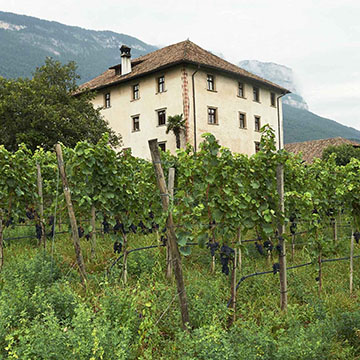 Let's talk more about Pinot Grigio and its reputation, in the United States, of being a cheap, bulk, sort of tasteless wine. What are you doing with your Pinot Grigios to help change this impression?
Let's talk more about Pinot Grigio and its reputation, in the United States, of being a cheap, bulk, sort of tasteless wine. What are you doing with your Pinot Grigios to help change this impression?
I think it's a matter of approach. Of course, the same happens to other grape varieties as well. But I think Alto Adige has, first of all, great natural conditions to plant Pinot Grigio as we have dolomitic limestone and this dolomitic limestone gives a certain nice structure to the wine. Then it depends on your winemaking approach. And as I've said, of course we could also in Alto Adige make bulk Pinot Grigio but it would be a loss of money I think. I think we have a beautiful possibility to increase the profile from this grape variety through, as I said, by playing with skin contact, playing with whole cluster vinification. And then at the very end, adding those components to maybe another part of the Pinot Grigio. It's a very interesting way of increasing the profile, increasing the character of Pinot Grigio.
And you're right, I think only in the U.S., in general Pinot Grigio became a brand and gained a certain, as you said, "bulk" wine reputation. But I think it's a matter of focus. If you focus on high quality, and if you have the right natural conditions, and if you're using the right vinification methods, you can get out of this grape variety a very beautiful structure, a very beautiful character, a very beautiful wine. So, I think it's about the focus.
Can you tell us how the winemaking at your winery has changed and evolved over the years?
I think I would say the whole agriculture, whole winemaking, changed extremely in the last 20 to 30 years. I have to think that Alto Adige 30 years ago was known for bulk wine, and that it was known for red wine, especially Schiava, which nowadays has a good reputation but 30 years it was just producing quantities, quantities, quantities. And also I think the winemaking changed, because 30 years ago, people were looking for clean wines, for wines that taste similar, a little bit more neutral. Nowadays we are going back to using maceration or skin maturation, whole cluster vinification; it's nothing new. It's not that we reinvented the wheel. It's just using it again and knowing how to use it.
I think the biggest improvement in the last few years was to vinify those components I was just talking about before. Those components between limestone, volcanic soil, different elevations, different vinification methods, to really get much more detailed about it. About the winemaking as well. To experience each single component. Because a Chardonnay on a volcanic soil has nothing to do with a Chardonnay on dolomitic limestone.
So it's about trying to understand what's different, and then at the very end, to blend. So that's something that we are very eager about, to really understand those components; strive for the highest quality; experience those components; at the very end, blend those components.
I think this changed a lot, especially having many winemakers I think, or the theory is like a little a marriage from the beginning. Our vinification is a separate vinification. And we, nowadays, are going much more for separated vinification than we maybe did a couple of years ago, where we harvest certain parcels together, and so on. And now we are really trying to get much more detailed about certain parcels. It starts with the harvest, but we want to play with diversity and trying to experience the whole diversity. And I think this changed a lot.
But we didn't change because we are now the new generation, and we wanted to change the style of our wines because we weren't happy with the older ones. Nature's changing. Climate is changing. And our question should be, how can we guarantee the freshness, the acidity, in five, 10, 20 years? It's not about how to change things. Of course, we do use skin contact or whole cluster contact, but it's about can we add those components, how can we increase the profile of a wine, and trying through these vinification methods, how can we guarantee the freshness? How can we guarantee our style of wine? And our style of wines is always to keep a certain preciseness, a certain tension, a certain liveliness to the wine. And if it's getting warmer, you have many more difficulties. So it's about using those different old or new vinification methods in order to guarantee the style actually.
 Can you tell us how the geology and altitude affect your vineyards?
Can you tell us how the geology and altitude affect your vineyards?
They have an incredible impact on our wines and on our vineyards. Alto Adige, it's just a playground of diversity of geology, of altitudes. And it's very beautiful to play again, here, with those different conditions so it's very interesting in the wine business, that normally talking about wine, it's very strange that sometimes one character of a wine, it's linked to only one factor. So, people talk about the minerality and the minerality comes from the limestone, often. I would sometimes doubt that it comes from the limestone, because also here, the limestone, or let's say the chalk gives us the structure, not the minerality.
So again, what we try to do, by playing with the different altitudes, by playing with the soil types, is to understand at the end, what it is the chalk is really doing, what it is the limestone is really doing with the wine. What is the volcanic soil doing with the wine? And this is the beauty about it. So, really playing with this huge diversity, geological diversity and altitude-based diversity.
I saw on Instagram that you brought in bees to the winery. What do the bees do?
They help us to create a closed organism. They for sure have no effect on the vines. They don't affect the blossom of our grapes. But I think a bee, as an animal and as the foundation of the biodynamics and the foundation of our philosophy is always to create a certain closed organism, a bee's an extremely important animal to recreate diversity in our soils, in our vineyards. And also to help to grow other plants in the middle of the rows, and it's fascinating how even through bees, all of a sudden you get a certain life back in the vineyards.
I understand that art and music are also integrated into the winery. Can you tell us how?
Yeah, the music, my father was for a long time the president of the contemporary art museum in Bolzano. And my mother is a choreographer for contemporary dance. So they were always very much into art. And one goal was always to bring artists into the winery as a residency or artists-in-residency, and they got inspired by the philosophy, by the neighborhood, by the winery, and then they created a piece of art.
And art helps you often to understand things. Art has a beautiful approach, showing different things that happen around, you know? And so, we have certain artists, like Matt Mullican or Rosemary Trockle, Christian Filetbillo, and Mario Airo, who stayed in the winery, got inspired by the philosophy and then created a piece of art. Can I tell you about one in a little bit more detail? So that you understand it?
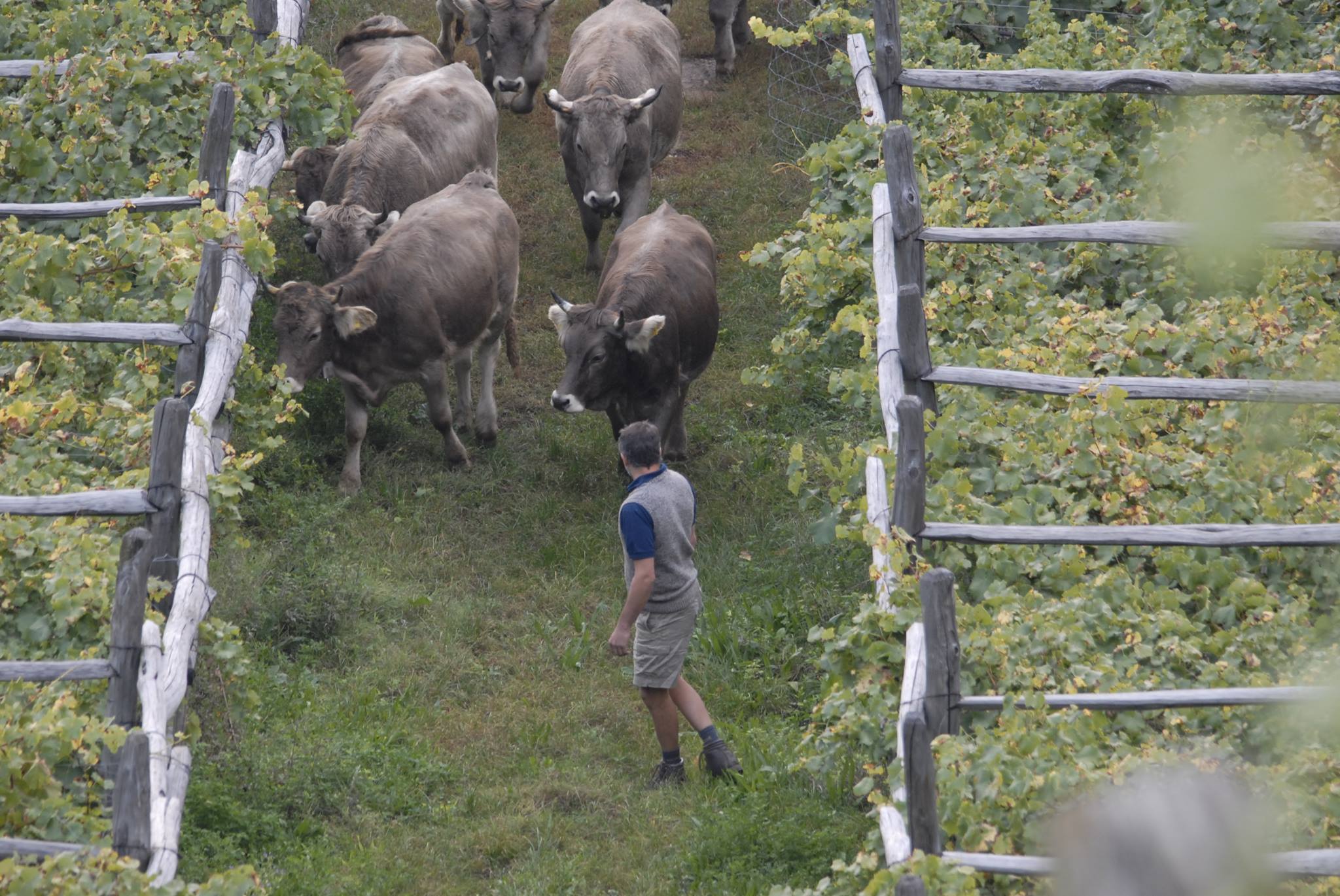 Sure.
Sure.
Because it's difficult to talk about the art, or the effect of the art, without having it in front of us. So for example, there's one piece of art from Mario Airo. He's an Italian artist, and he got inspired by the fact that in a very fast-moving world, as a winemaker you give so much time to your wine; you really slow it down. And he was influenced by this idea, and then he took a piece of Johann Sebastian Bach, and Johann Sebastian Bach is known as the master of harmony. And he stretched it out and out of just one minute he made one hour. And so it gets this really slow music, this really slow sound. And with the slow sound he wants to give the message to the wine, "Look, take your time; take it easy. As soon as you're in the barrel, wait, be patient, and be patient to arrive at your perfection."
And it's a very beautiful way to describe the careful vinification methods and that in winemaking you need to give time to your wines. It's not just vinifying them and then releasing them. It's a very handcrafted work. And I think these kinds of messages you get through in a very beautiful way through art.
Do you actually play the music in the cellar?
We do play the music. It's connected to a windmill, and this windmill is on the rooftop. And so in the summers in the afternoon, we always get a very strong wind blowing through the valley. And as wind turns around the windmill, the windmill switches on the music. And so it's a beautiful thing that even though you are standing in the middle of the cellar, you always should be connected with the outside. And the music, it's like a longer arm of the wind, of nature. And so this is also a very important message given by this piece of art. That even in the cellar, you'll always be linked with the outside; you should always be linked with nature. And look, also in the cellar, to continue with the very natural and careful vinification.
More from Lisa Denning on Grape Collective.










